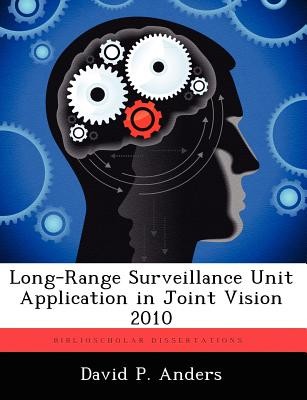
- We will send in 10–14 business days.
- Author: David P Anders
- Publisher: BiblioScholar
- ISBN-10: 1249372070
- ISBN-13: 9781249372073
- Format: 18.9 x 24.6 x 0.6 cm, softcover
- Language: English
- SAVE -10% with code: EXTRA
Long-Range Surveillance Unit Application in Joint Vision 2010 (e-book) (used book) | bookbook.eu
Reviews
Description
This study investigates the ability of the current force structure and organization of long-range surveillance units to accomplish the reconnaissance requirements expressed in the emerging operational concepts of Joint Vision 2010. The study analyzes the role of long-range surveillance operations in the Army's past and present doctrine. Additionally, the study analyzes what the future intelligence collection requirements are in accordance with Joint Vision 2010 and what role long-range surveillance units are capable of playing in the accomplishment of those requirements. Using both quantitative and qualitative analysis, the study makes a set of inferences and generalizations about the current state of long-range surveillance operations and future application. The study concludes with the observation that though long-range surveillance units are required in accordance with our most current doctrine, the current organization and force structure does not support the future reconnaissance requirements expressed in the emerging operational concepts of Joint Vision 2010. The study recommendations a reformation of the current organization and force structure to two, multicomponent reconnaissance battalions assigned to the military intelligence brigade of the two contingency corps. Each battalion would be capable of providing modular, tailorable, force projection reconnaissance task forces within their respective corps area of operation. Each reconnaissance task force will be designed, organized, and trained to accomplish the intelligence collection requirements of the future battlefield.
EXTRA 10 % discount with code: EXTRA
The promotion ends in 16d.07:44:38
The discount code is valid when purchasing from 10 €. Discounts do not stack.
- Author: David P Anders
- Publisher: BiblioScholar
- ISBN-10: 1249372070
- ISBN-13: 9781249372073
- Format: 18.9 x 24.6 x 0.6 cm, softcover
- Language: English English
This study investigates the ability of the current force structure and organization of long-range surveillance units to accomplish the reconnaissance requirements expressed in the emerging operational concepts of Joint Vision 2010. The study analyzes the role of long-range surveillance operations in the Army's past and present doctrine. Additionally, the study analyzes what the future intelligence collection requirements are in accordance with Joint Vision 2010 and what role long-range surveillance units are capable of playing in the accomplishment of those requirements. Using both quantitative and qualitative analysis, the study makes a set of inferences and generalizations about the current state of long-range surveillance operations and future application. The study concludes with the observation that though long-range surveillance units are required in accordance with our most current doctrine, the current organization and force structure does not support the future reconnaissance requirements expressed in the emerging operational concepts of Joint Vision 2010. The study recommendations a reformation of the current organization and force structure to two, multicomponent reconnaissance battalions assigned to the military intelligence brigade of the two contingency corps. Each battalion would be capable of providing modular, tailorable, force projection reconnaissance task forces within their respective corps area of operation. Each reconnaissance task force will be designed, organized, and trained to accomplish the intelligence collection requirements of the future battlefield.


Reviews